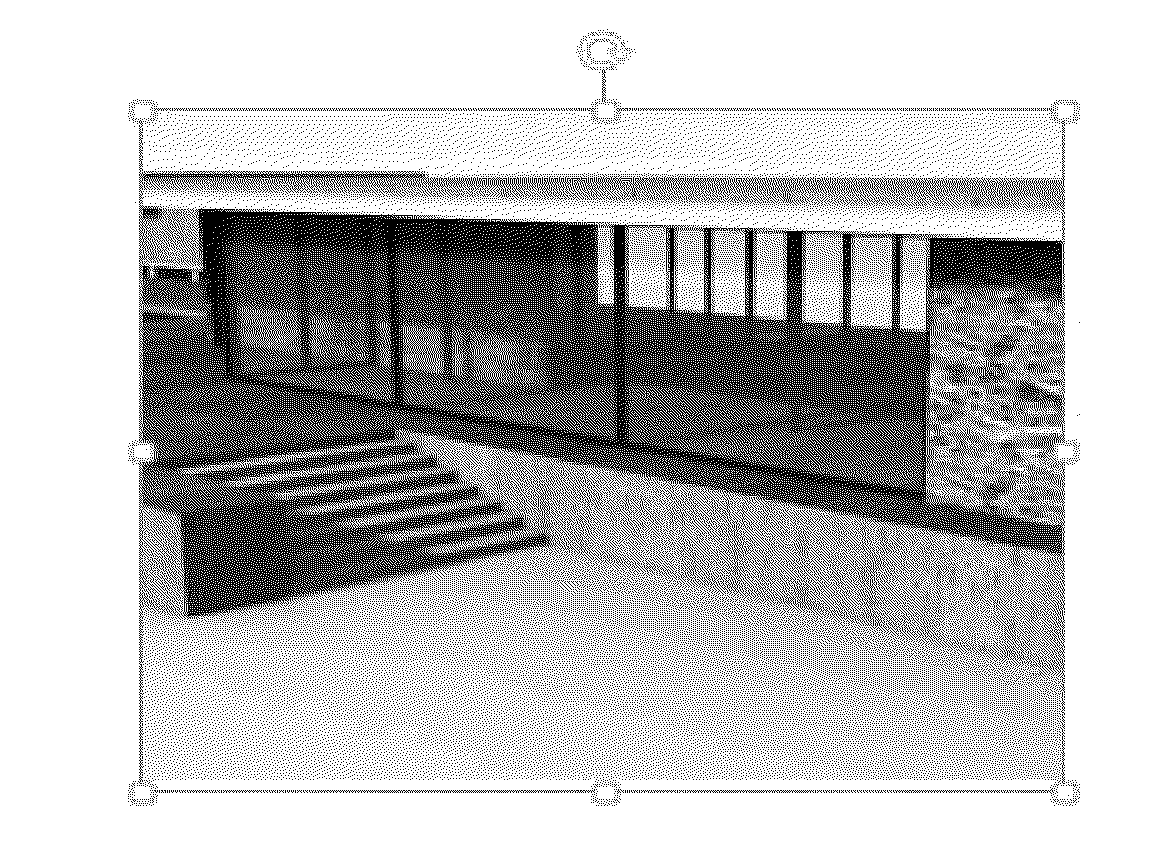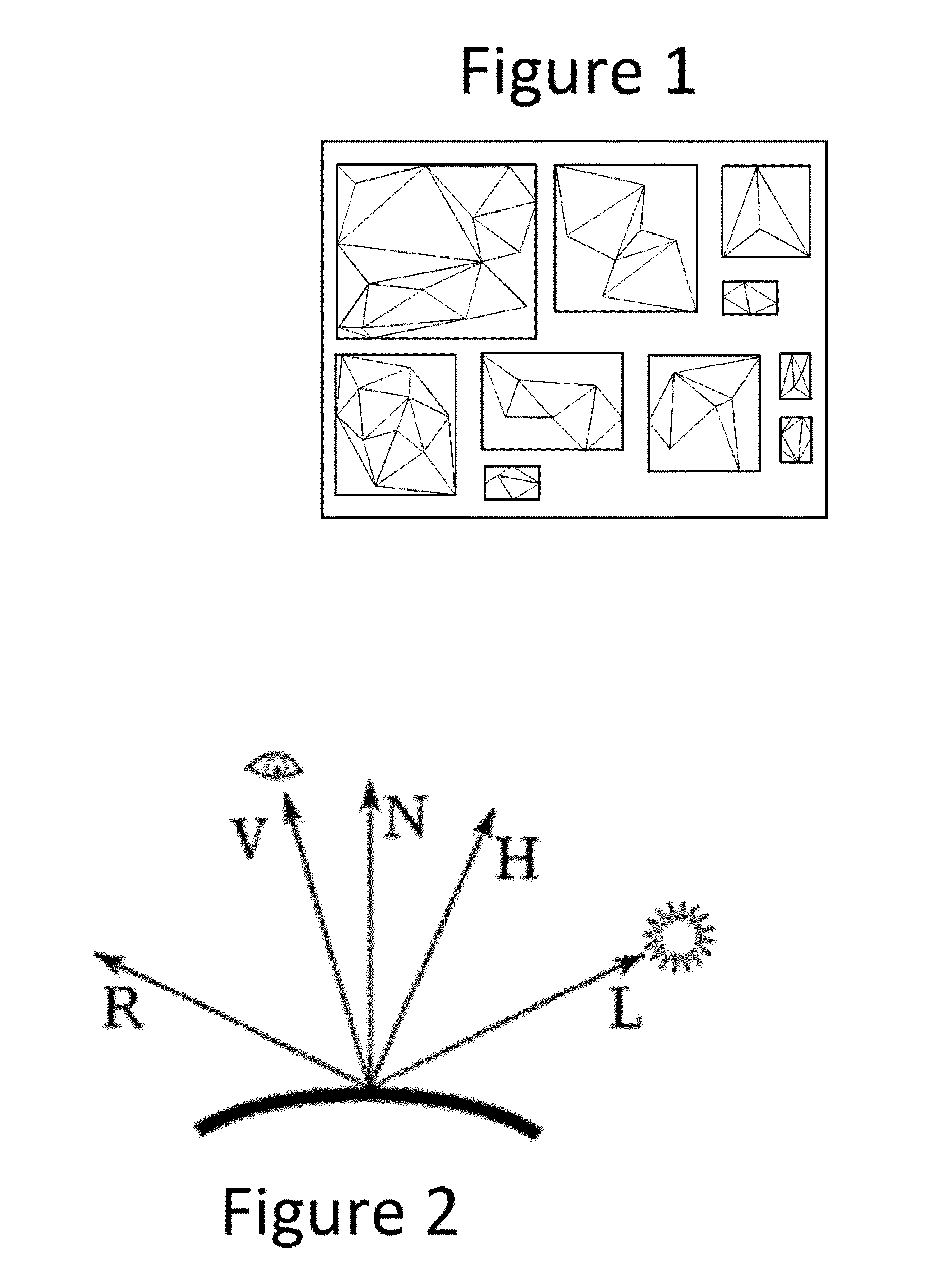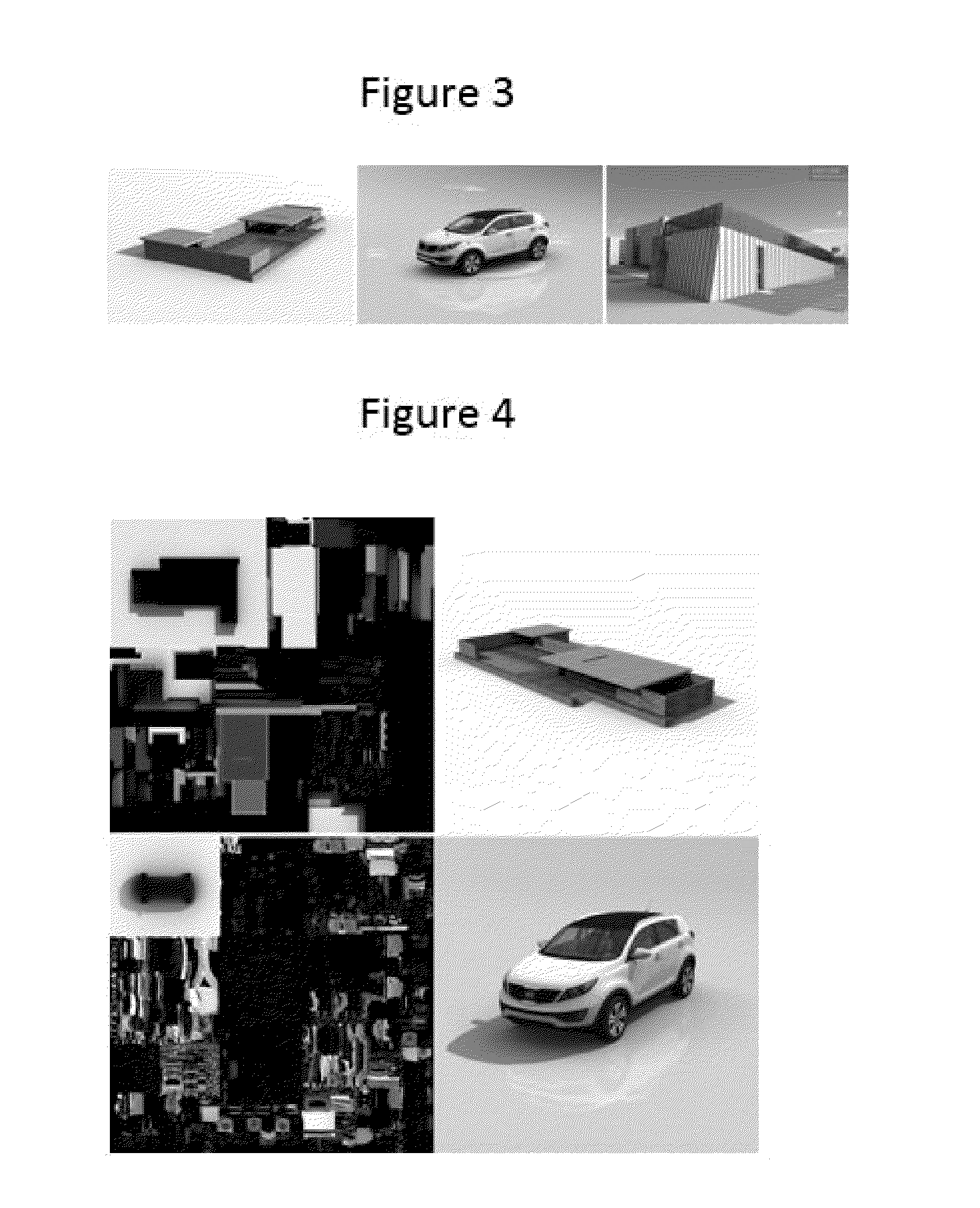Rendering and Lightmap Calculation Methods
a calculation method and lightmap technology, applied in the field of rendering and lightmap calculation methods, can solve the problems of inability to carry out actions such as separate or select individual parts of the model, inability to quickly propagate changes in the cad model, and inability to quickly solve current solutions, etc., to achieve automatic reduction of the number of polygons, without increasing the size of the scene geometry or its loading time.
- Summary
- Abstract
- Description
- Claims
- Application Information
AI Technical Summary
Benefits of technology
Problems solved by technology
Method used
Image
Examples
Embodiment Construction
[0051]What follows is a brief description of an embodiment of the invention by way of illustrative and non-limiting examples thereof.
[0052]As mentioned above, the main technical factors that determine the drawing speed of the scenes are:[0053]Number of CPU-GPU calls (draw calls).[0054]Change of textures.[0055]Number of polygons in the scene.[0056]Size of textures.
[0057]Therefore, these numbers must be reduced and for which reason the process is as follows:
[0058]In order to reduce the number of draw calls and the change of textures, the objects of the scene are drawn grouped together by material and texture. When a scene formed of single geometries and the instances that they refer to is loaded, the instances are grouped according to their material and a new geometry is calculated for each group, joining and transforming each geometry into a common coordinate system, in such a way that the drawing of several instances is subsequently substituted by the drawing of a single object in a...
PUM
 Login to View More
Login to View More Abstract
Description
Claims
Application Information
 Login to View More
Login to View More - R&D
- Intellectual Property
- Life Sciences
- Materials
- Tech Scout
- Unparalleled Data Quality
- Higher Quality Content
- 60% Fewer Hallucinations
Browse by: Latest US Patents, China's latest patents, Technical Efficacy Thesaurus, Application Domain, Technology Topic, Popular Technical Reports.
© 2025 PatSnap. All rights reserved.Legal|Privacy policy|Modern Slavery Act Transparency Statement|Sitemap|About US| Contact US: help@patsnap.com



